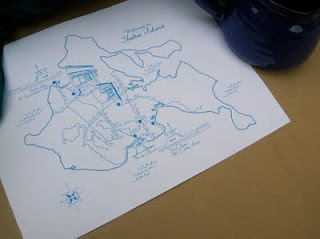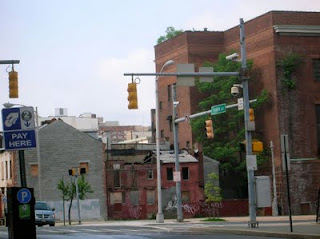Cloudery
Cloudery draws in
pen & ink and
paints with watercolor. Drawings, using a pen with a point just .2mm wide, take hours to create. Organic, abstract, a stream-of-consciousness on the page. Sales from Etsy support child literacy by donating to
First Book, a non-profit organization that gives children from low-income families the opportunity to read and own their first new books. One of the studies cited by
First Book states that in middle-income neighborhoods there is an average of 13 books for every child, while in low-income neighborhoods there is an average of 1 book for every 300 children. As a book designer and avid reader, Cloudery feels very much in tune with both the importance of reading to develop one’s imagination and rich interior life, as well as the joy in owning one’s own books. Cloudery thinks that children feel a sense of wonder and pride in ownership that makes their own
books very treasured possessions. The desire to read follows naturally.

Does your experience as a book designer influence your drawing and painting practice?
As I design "coffee table" books for museums and galleries, I'm constantly exposed to the work of artists and artisans spanning hundreds of years, including contemporary and emerging artists. While all artists use their work as a voice to express their world view, or their belief systems, or the particular philosophical ideas and aesthetic ideals in which they are interested, the artists I tend to find most compelling are
those that are self-taught, and create because they "have to," in order to express themselves — and not because they are part of an art scene or caught up in the gallery world; those artists that find their voice, their language, their best form of communication through their creative expression.
I draw and paint because it is integral to how I navigate life, because I need to
express myself visually, and because creating images is meditational and sustains me. Even if all the drawings just ended up in a drawer (and many do!), I'd still create.

Your work seems to be informed by the natural environment, what are some of your favorite geographic areas or habitat types from which you draw inspiration?
My drawings are
very "organic" — meaning that rarely do I set out to draw
something in particular. While I may be influenced by an idea, a sentence, a snippet of poetry or song lyric, it is generally in an abstract way, and I do very little planning. Most often, when I finish the drawing, or am close to finishing the drawing, I step back and look to see what I can see in it, and that becomes (for me, at least) what is is. Or what it may be. An example is "
Portrait of a Bird Skull," which was titled and "identified" only after I finished. But often I c
hoose not to give literal titles to the drawings because I like when the viewer determines their own idea of what they see. I love the
ocean, and I love
animals, and I'm really interested in the natural sciences like biology and zoology, and I think that the particular shapes I create tend to
mimic natural forms, and create this organic mosaic, rather than a rigid construction. Even when I work with specific shapes — like in the
"Horses" and
"Foxes" paintings — I am still filling those shapes in a non-literal, free-flowing manner.

Are there particular themes or mediums you hope to explore through future work?
In late April I started a project titled
"27 Minutes" for Peculiar Bliss, a quarterly juried illustration magazine. Their theme for
issue 6 was "Pastime." I decided that I'd draw for 27 minutes every day, eventually filling a 9 x 9 inch square — my pastime. I'm still working on it, but the work was accepted and published in an in-progress state, clocking in at 50 days / 22.5 hours. The process of this drawing has had a pretty radical effect on my drawings since; it's as if I am building a vocabulary of shapes, symbols, and glyphs that I have started to employ in my current work. That piece went a long way in shaping my current style.
I've only been using
watercolors since March, so I have a lot to learn. But I've become very interested in
combining watercolor and pen & ink in unexpected ways. As in the "Horses" and "Foxes" series, I have embarked on exploring shape recognition, optical illusion, perspective, positive and negative space, and color harmony. I'm perfectly happy to work on the same forms over and over again, exploring the possibilities. This is something I plan to pursue more in the future, while I continue to develop my "watercolor voice."

Many thanks to
Cloudery for sharing this beautiful work!
What do you think of these meticulous illustrations?










































